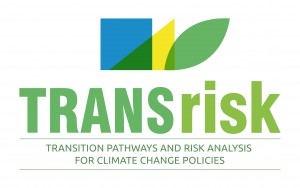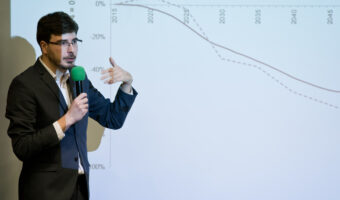The energy policy of Poland is at a crossroads. On the one hand, we feel the pressure from international institutions to reduce CO2 emissions in our economy, and thus reduce coal consumption and increase the investments in renewable energy sources (RES). On the other hand, we are afraid of the social consequences of moving away from coal. On 28th of November we have published the report “Risks associated with the decarbonisation of the Polish power system” (red. Jan Witajewski-Baltvilks). Below we described the key findings.
Optimal electricity mixes for Poland
We quantify the economic costs and identify the risks associated with a transition of the electricity-generation sector away from fossil fuels. We develop a baseline pathway, in which Poland continues to rely on coal, and a decarbonisation pathway, whereby the coal sector is more rapidly phased down, and compare them using an array of quantitative and qualitative tools.
The decarbonisation pathway will involve higher costs than the baseline pathway. However, the overall cost for the economy will be small, and furthermore, the electricity sector will emit half the CO2 than that of the baseline pathway by the middle of the century. The main difference between the pathways is the elimination of coal and lignite power plants under decarbonisation, although coal will continue to be used for combined heat and power plants. Furthermore, investment in costly biogas, biomass, and photovoltaics is significantly higher for the decarbonisation pathway. Both pathways predict a similar, increasing level of investment in onshore wind power and the introduction of nuclear power.
The total effect of decarbonisation on GDP decrease and unemployment increase – is negligible
Despite the significant investment required to achieve decarbonisation of the electricity sector, the cost for the entire economy is small, and, what is more important, transitory. The total capital and operating expenditure is 14% higher for the decarbonisation pathway, but it is important to note that it is spread over a period of 30 years and that this sector accounts for a small part of the economy.
The macroeconomic analysis indicates that the baseline pathway is associated with higher GDP and consumption than the decarbonisation pathway. That is because the additional investment required in the decarbonisation pathway crowds out investment in the other sectors of the economy, such as services, particularly in the short term. However, the difference in GDP and consumption between both pathways is very small and should not be a decisive factor for policy-makers. The key results do not change if we perform the analysis for alternative assumptions regarding the evolution of EU ETS prices and intermittent renewable energy costs, as well as the availability of nuclear technology.
Risks associated with the decarbonisation & baseline pathway
In addition to the general macroeconomic study, we conduct an analysis of other risks and issues that are linked to the baseline and decarbonisation pathways using tailored quantitative and qualitative methods.
The analysed risks associated with the decarbonisation pathway include:
- the loss of stability in the energy system and energy security,
- technological dependency,
- and labour loss.
The analysed risks associated with the baseline pathway include:
- the loss of international reputation,
- waste of R&D resources,
- and dependency on imported coal.
Importantly, some risks associated with decarbonisation, such as a fall in employment and technological dependency, could be mitigated if the government communicates to firms and workers that the scale-down of the coal sector is inexorable given the global commitment to combat climate change. However, this will be accompanied by a simultaneous scale-up of the sector related to carbon-free technologies.
In the last section we discussed some of the risks associated with the implementation of the decarbonisation pathway. We highlighted the risk of a lack of support or opposition towards decarbonisation by three groups of stakeholders: experts, citizens, and political parties.
“Is it profitable to move away from coal in Poland?” IBS seminar (28.11.)
The report was presented at the IBS seminar in Warsaw on 28th of November. Just before the UN climate summit in Katowice, we considered the consequences of choosing one of the two paths of transformation of the Polish energy sector: decarbonisation (significant reduction of CO2 emissions) or no decarbonisation. The IBS results were presented by: Jan Witajewski-Baltvilks, Marek Antosiewicz and Jakub Sawulski. Jerzy Lipka (pro-nuclear movement) showed the potential development of nuclear technology in Poland. In the last part we discussed about the risks and opportunities associated with different energy sources: coal, onshore, offshore, nuclear energy. Panellists: Robert Jeszke (National Centre for Emissions Management), Jerzy Lipka (pro-nuclear movement), Joanna Maćkowiak-Pandera (Forum Energii), Łukasz Sawicki (Polish Ministry of Energy), Jan Witajewski-Baltvilks (Institute for Structural Research, University of Warsaw).
We encourage you to read the summary at the seminar website.


